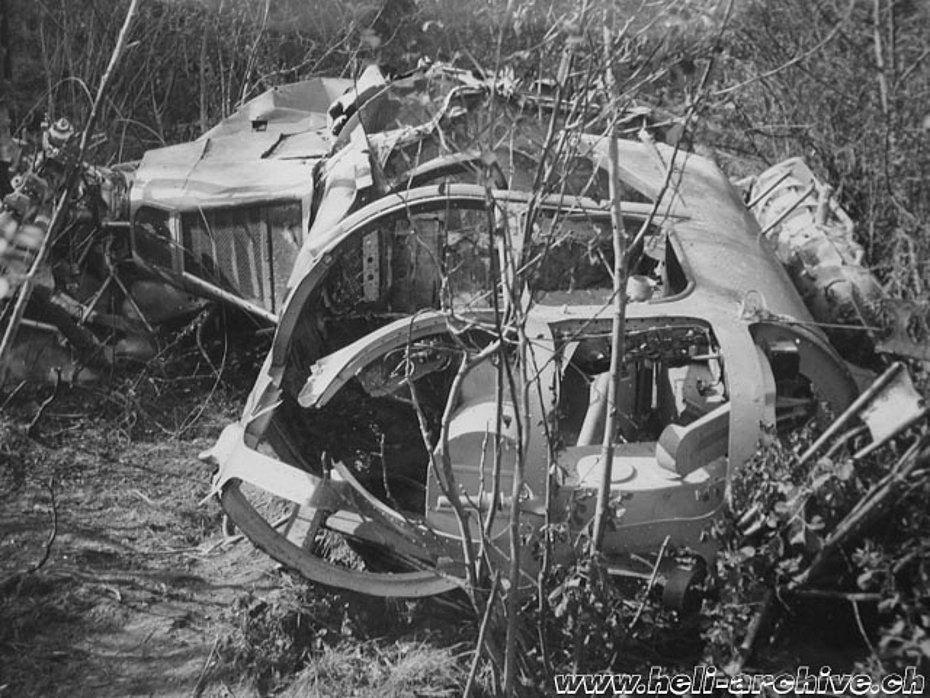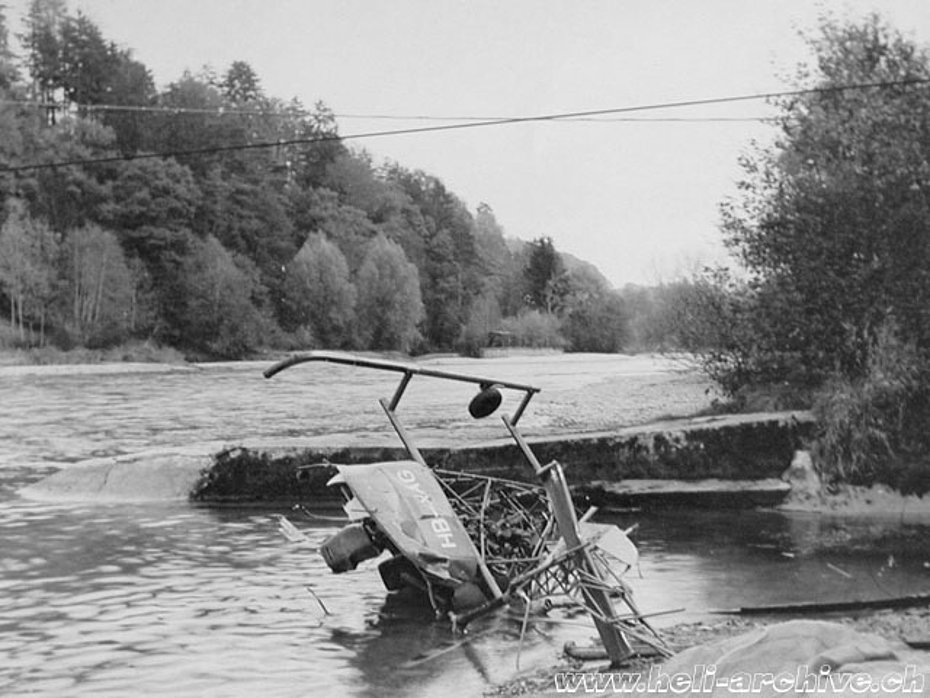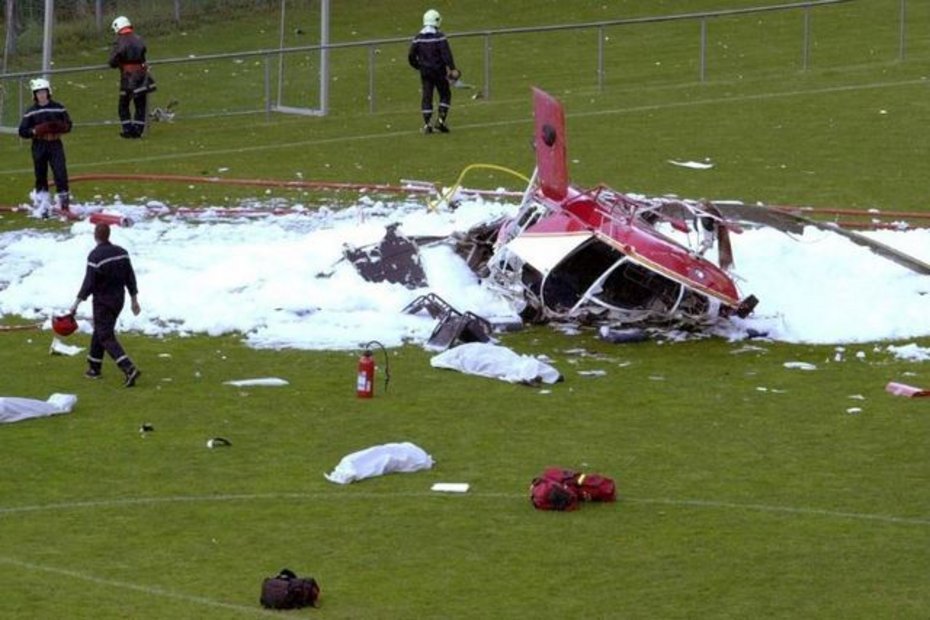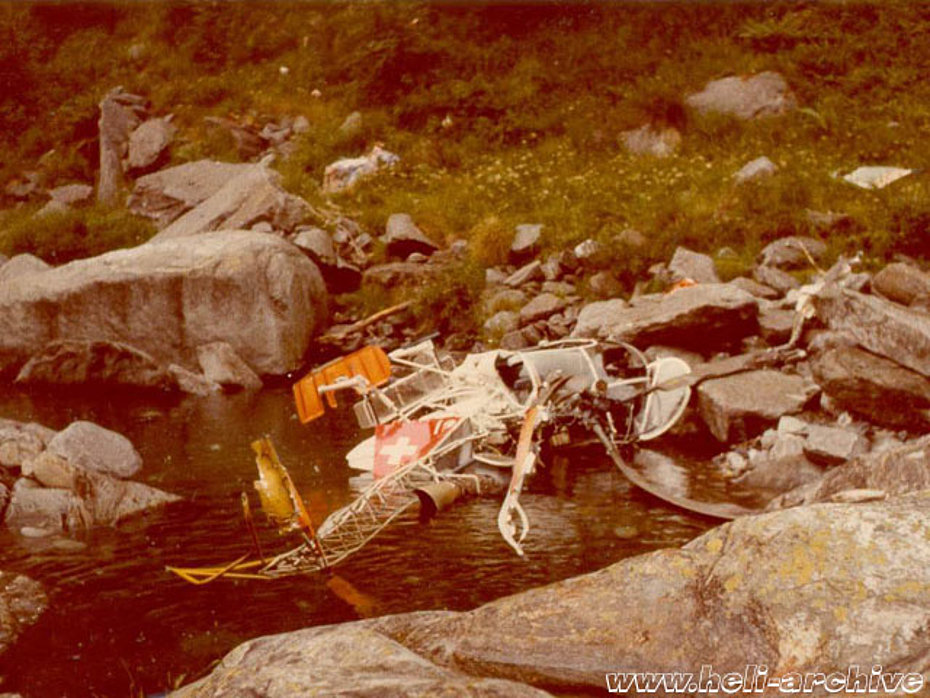
In every activity that involves a risk it is inevitable that sooner or later an accident happens, and aviation is no exception
In Switzerland the use of the helicopter has quickly spread starting in the second half of the 1960s. The particular geographical configuration of the territory has contributed in a determinant way to this expansion, to the point that Switzerland presents one of the world highest concentration of helicopters compared to its small surface (300 civil and more than 40 military helicopters in a territory of about 41'000 sq km).
Up to 1965 aerial transportation of building materials was almost exclusively done by Heliswiss or by the Valais Section of the Aero Club of Switzerland. In order to answer to the increasing requests for aerial transportation necessary to supply the construction of new power lines, aqueducts, ski installations, mountain huts, etc. in those years new helicopter companies were founded.
However the unfortunately long list of accidents started very soon: on May 4, 1950 in Aproz/VS the Westland-Sikorsky S-51 G-ALEI during a series of aerial treatments against the invasion of May-beetles hit the cables of an electrical power line and crashed. The English pilot Peter E. D. Moore was seriously injured while the helicopter was destroyed.

The first accident to an helicopter registered in Switzerland took place on June 13, 1951 in Schlatt/SH. The pilot Albert Villard while spraying a crop with the Hiller 360 HB-XAA went too near to a group of trees, so much that the blades of the main rotor hit some branches. Despite the strong vibrations, the pilot succeeded in landing the helicopter without further unforeseen events.
The first fatal accident happened on October 26, 1953. Since a few weeks Schweizerische Helikopter AG (which later became Heliswiss Ltd.) had received its first helicopter. After having accomplished a passenger flight in the surroundings of the airport of Belp/BE, the pilot Raymond Gerber was returning to the base. While flying low over the river, Bell 47G HB-XAG hit the cables of an electrical power line and crashed in the river. In the accident the three occupants on board lost their lives.

The first accident abroad to a Swiss registered helicopter took place in Celle (Germany) on March 13, 1954 and the pilot involved was Josef Bauer on board a Hiller 360. During a series of passenger flights, the tail rotor hit the cables of an electrical power line placed on the border of the landing field. Seriously damaged the helicopter but fortunately no consequence for the occupants.
The most serious accident which has up to now happened in Switzerland is the one happened on September 26, 2000 in Beuson/VS, which involved two machines of Air Glaciers which collided during the approach to the landing spot after a series of panoramic flights. In the accident seven occupants of an Alouette III lost their lives as well as one who was on board a Bell 206 Jet Ranger.

Causes of accidents are obviously a lot. Looking through the list of those that happened in Switzerland some remarks about them can easily be done. At the beginning mechanical failures were more frequent but today, as in the past, the main cause for accidents is to be ascribed to the pilot. Often inexperience, negligence, lack of flight training combined with stress, lead to an underestimation of dangers. Meteorological conditions has played an important role in many accidents. In several cases the helicopters have hit the cables of electrical power lines. This constant threat, although shown on maps, has unfortunately made some renowned victims such as Fernand Martignoni or Erwin Schafrath, very expert pilots with thousands of hours of flight experience under their belts.
Some accidents are really incredible as, for example, the take off of a helicopter without the pilot on board (in both cases the helicopter concerned was the Hughes 269C). Also to be mentioned two cases of theft by persons who had never obtained a helicopter licence.
The development of civil aviation has shown that it is necessary to draw up international regulations which guarantee that civil aviation and the air traffic infrastructure comply with the same Standards. In the beginning, aircraft accident investigations were frequently carried out by the supervisory authority. As a supervisory authority could be involved in the actual root cause of an air accident, by issuing inappropriate regulations or by failing in its obligations, a separation of influence is appropriate here. In the 1950s, the ICAO therefore recommended that air accidents be investigated by independent bodies. The Swiss Parliament pronounced the creation of an Aircraft Accident Investigation Bureau (AAIB), which started its activity in 1960. Until 2011 the AAIB was integrated into the general secretariat of the Federal Department for the Environment, Transport, Energy and Communications (DETEC).
The Swiss Accident Investigation Board (SAIB)
The SAIB was created on November 1, 2011 out of a merger between the Aircraft Accident Investigation Bureau (AAIB) and the Investigation Bureau for Railway, Funicular and Boat Accidents (IRFBA). It acts on behalf of judicial and public authorities, and its task is to investigate aviation incidents, railway, cableway, roadway and waterway accidents that have caused serious injuries, fatalities and major material damage.
The SAIB reports to an extra-parliamentary commission that decides which internal unit will conduct the actual investigations. This commission also reviews investigation reports.
HAB 11/2011

